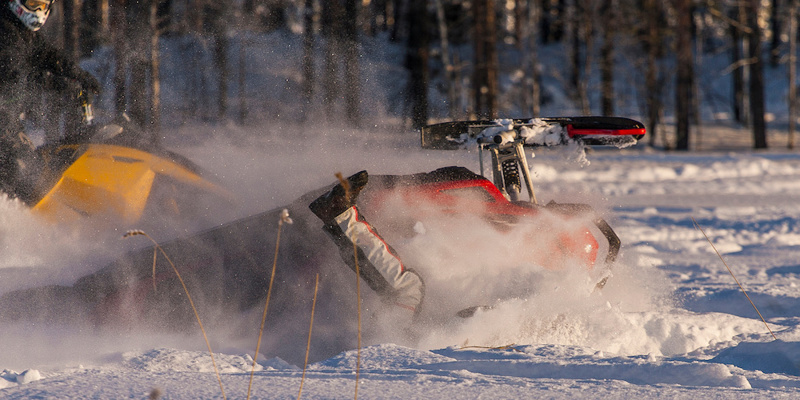
Snowmobiling is a thrilling outdoor experience and one of the most popular winter recreational sports. Although snowmobiling isn’t inherently a high-risk activity, it is one of the most dangerous outdoor recreational activities. Unfortunately every year people are seriously injured or even killed while snowmobiling. Whether this is your first season or you’re an experienced rider, here’s some information to help keep you safe and make your rides more enjoyable.
How Do Most Snowmobile Accidents Happen?
The leading causes of snowmobile accidents are excessive speed, use of alcohol, lack of experience and poor judgment. Snowmobile accidents result in approximately 200 deaths and 14,000 injuries each year with accidents occurring on roadways, highways and public and private trails. Luckily, most snowmobiling injuries can be prevented by following simple safety guidelines.
When you’re riding a snowmobile, you’re often driving in very harsh conditions on terrain that’s covered in snow, potentially hiding dangerous obstacles. Traveling at high speeds slows your reaction time to changes in terrain, obstacles and oncoming sharp turns and curves. Speed can cause injuries and accidents in any sport including vehicle based ones. Generally riders are not strapped into a snowmobile and can therefore easily be thrown off especially if they’re traveling at high speeds.
Riding a snowmobile requires alertness and attention, and your reaction time and ability to control your sled are drastically affected after consuming even small amounts of alcohol. Unfortunately drinking and intoxication are common despite the fact that it can cause serious accidents and have fatal results. Alcohol also causes your body temperature to drop at an accelerated rate which increases your susceptibility to cold and hypothermia.
Snowmobiling occurs in a natural environment subject to varying and often unpredictable weather conditions. It’s important to know the terrain you’re going to ride, stick to groomed trails and go in a group, especially if you’re new to riding and keep an eye on the weather. Drowning is one of the leading causes of snowmobile fatalities, so wherever possible avoid riding on frozen lakes and rivers because ice conditions are never guaranteed.
How to Safely Enjoy Snowmobiling
While you may think you can just jump on a snowmobile and go, most states have laws and regulations that must be followed including taking a snowmobile safety course. Just like driving a car on roadways, there are specific laws and signs you need to be familiar with and obey when you’re out riding.
You might assume that because you’re riding in snow, you’ll have a soft landing in the event of a fall, unfortunately this is a common misconception. Snow isn’t always soft and there are things that could be buried that you could hit if ejected from your sled. Choose your clothing carefully with layers, including wind and waterproof ones and always wear a helmet and goggles.
Never drink and ride and always maintain a speed that allows you to react quickly to unexpected obstacles especially at night when your visibility is reduced by darkness. Snowmobiling on ice is much more dangerous and extremely unpredictable so avoid riding on ice unless it’s necessary or guaranteed to be over 5 inches thick.Riding alone increases your risk of being injured in a remote area and unable to access help, so ride with a friend and stick to terrain you know, especially groomed trails if you’re a new rider.
In addition to these safety precautions, you’ll also want to ensure that your snowmobile is maintained and in proper working condition to reduce the risk of breaking down and leaving you stranded. Our service department can ensure your sled is well maintained and answer any questions you may have about riding safely. Give us a call at 435-783-4718 or get in touch.

 Admin
Admin
Leave A Reply
Your email address will not be published. Required fields are marked *